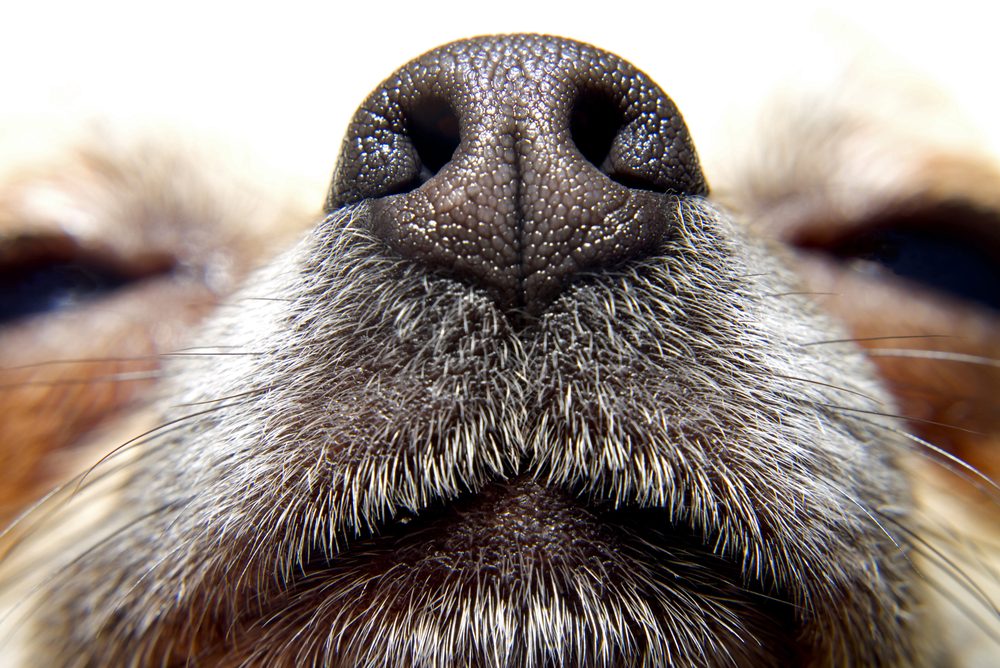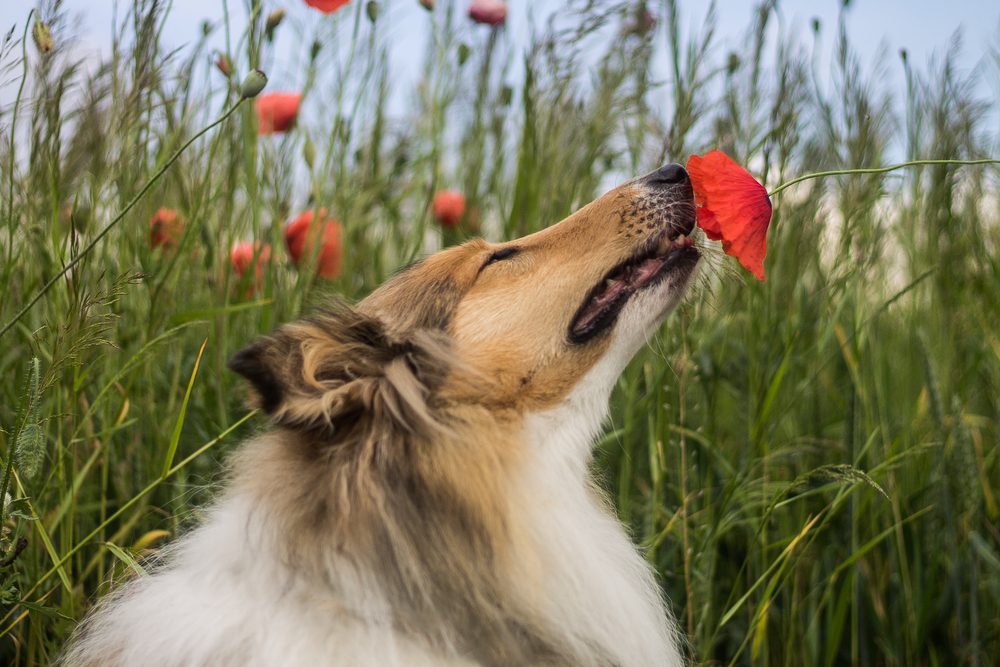Humankind has been putting the souped-up olfactory systems of our canine companions to work for us since the times of hunter-gatherers. Today, sportsmen still use dogs to track game. Scent-tracking dogs help find missing persons. Law enforcement uses specially trained dogs to sniff out explosives and drugs. Some dogs have even been trained to sniff out diseases, such as cancer and diabetes.
And while the vast majority of dogs aren’t trained for these specialized activities, they all have one thing in common: Sniffing is an important social and mental activity for all dogs. That’s why allowing your dog to indulge in sniffing behaviors on your daily walks benefits you both.

About that nose
They’re mostly wet and often wind up in some stinky and inappropriate places, but your dog can’t help it. By design, a dog’s nose contains more than 300 million olfactory receptors. In comparison, a human’s nose contains only 6 million, meaning a dog’s sense of smell is 50 times greater. And while humans use the same system to breathe and smell, a dog’s nose functions differently.
As dogs breathe in, a fold of tissue diverts the air down two pathways. The majority of the intake takes air to the lungs, while the remainder — about 12% — travels to a recessed area in the back of the nose dedicated to processing smells and odors.
In addition to all those extra receptors, dogs possess a second olfactory organ, known as the Jacobson’s organ. This organ sits in the bottom of the nasal passage and is responsible for detecting pheromones, especially those related to sex and mating.
Dogs even exhale differently than humans do, too. Because we breathe in and out of the same passageway, the smells we detect are diluted. When our dog exhales, the carbon dioxide escapes from slits on the side of his nose, which stirs the returning air and actually pushes new smells in. This intensifies odors, allowing dogs to continuously concentrate on a particular scent.

Why sniffing is important
We get it. Stopping every few feet so your dog can catch up on the neighborhood’s canine news can become tedious. But think of it this way: Humans learn about the world around them by gathering information through sight and sound. Dogs learn about the world around them mainly through their sense of smell.
Scents from other dogs, especially those found on the proverbial fire hydrant, provide your dog with a heap of information. By sniffing the area, your dog can tell which dogs have passed by, how long ago they were there, whether they were male or female, and even what type of mood they were in at the time.
Sniffing is mutually beneficial
And while you probably don’t have the time or inclination to let your dog sniff everything he wants to, allowing him ample opportunity during the walk to sniff a few favorite spots is surprisingly mutually beneficial. Here are a few reasons why:
- Sniffing decreases anxiety and aggression. Experts believe some behavioral issues may occur because of a dog’s lack of information. Sniffing gives them the information they need to understand what’s going on around them.
- Sniffing is mentally stimulating. It helps your dog exercise his natural sense of smell in a fun and engaging way.
- Sniffing wears them out. Processing all those smells takes mental energy. At the end of a good walk that incorporates time for sniffing, your dog will most likely be more relaxed and less likely to exhibit destructive behaviors.
- Sniffing makes your dog happy. Without question, a dog’s nose was designed to process smell. Much as humans delight in visually taking in a fiery sunset, a dog delights in putting his nose in something stinky and inhaling deeply. Providing that enjoyment just makes the bond between the two of you that much stronger.
So, the next time you’re out for a walk with your dog, resist the urge to focus solely on the cardiovascular aspects of the activity. In addition to the medicinal benefits walking provides — stress relief, exercise, socialization, and companionship — now you can feel good about this daily activity for another reason. Sniffing makes your dog happy. And, seriously, do you need a better reason than that to stop a few times along the way?


